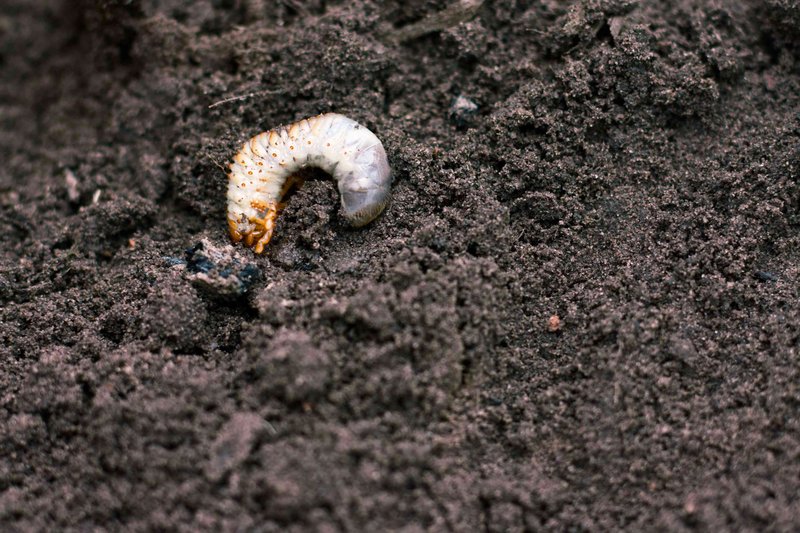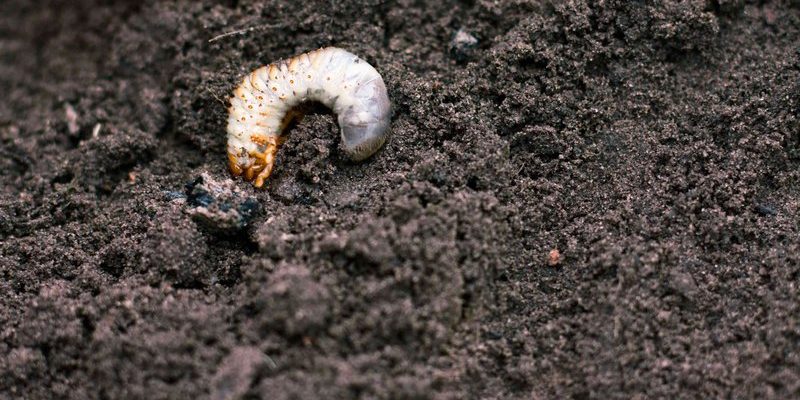
Today, we’re diving into the world of **grub worms** and **lawn rollers**, smashing some common myths along the way. Imagine you’re chatting with a friend over coffee—let’s discuss what’s really going on with your lawn. You might be surprised to learn that not everything you hear about these two topics is true. So grab your favorite mug, sit back, and let’s get started!
What Are Grub Worms?
Grub worms are the larval stage of scarab beetles. They’re often white or light brown with a C-shaped body and can grow to be around one inch long. You might think of them as the teenage version of beetles—still growing and getting into trouble! The most common type you’ll encounter is the Japanese beetle grub, which loves to munch on the roots of grass and various plants.
These little guys can cause significant damage to your lawn, leaving it brown and patchy. However, it’s important to note that not all grubs are bad. Some, like those of beneficial beetles, can help aerate your soil. So, before you start panicking about grubs, let’s dig deeper into what they really do.
Myth
It’s easy to jump to conclusions when you see any grub worm in your yard, but here’s the thing: not all grubs are created equal. While species like the Japanese beetle can wreak havoc, others actually play a role in maintaining a healthy ecosystem.
For instance, beneficial grubs can help improve soil health by breaking down organic matter. If you find grubs in your lawn, take a closer look. Are they causing significant damage, or is your lawn just in need of a little TLC? Knowing the difference can save you from unnecessary panic and spending on treatments.
Myth
Many lawn care products boast that you need to treat your yard annually for grubs, but let’s be honest—this isn’t always necessary. The truth is, the best time to treat for grubs is when you see signs of damage or if you’ve had issues in the past.
You might be wondering how to spot damage. Look for patches of grass that are wilting, turning brown, or are easily pulled up from the ground. If you’ve had a grub problem in the past, it’s smart to check your yard regularly. Otherwise, save your money and skip the preventative treatments.
How to Identify Grub Damage
To truly understand if grubs are a problem, you’ll want to know how to identify their damage. Here’s what to check for:
- Brown patches: Areas of your lawn that are turning brown might indicate grub activity.
- Loose grass: If your grass lifts easily from the soil, it’s a sign that the roots are being eaten away.
- Wildlife activity: If you’ve noticed more birds or raccoons digging around, they might be feasting on the grubs.
If you suspect grubs are the culprit, dig a small section of your lawn and count how many grubs you see. Typically, if you find more than 10 grubs per square foot, it’s time to take action.
What is a Lawn Roller?
Now, let’s switch gears and talk about lawn rollers. A lawn roller is a heavy device that flattens the soil and seed for a smoother lawn. Think of it like a giant rolling pin for your grass. Using one can help break down bumps in the ground and make your lawn look more polished.
There are two main types of lawn rollers: **water-filled** and **sand-filled**. The water-filled ones are easier to store since you can empty them when not in use, while sand-filled ones are typically heavier and provide more weight. But do they really work?
Myth
It’s common to hear that using a lawn roller is a must for achieving a perfect lawn. Here’s a little secret: it’s not true! While rolling your lawn can help with specific issues, it’s not necessary for everyone.
If your lawn is already smooth and healthy, rolling it could actually compact the soil too much, leading to drainage issues. Instead of rolling just for the sake of it, assess your lawn’s needs. If you’re dealing with uneven spots or new sod, then a roller might be helpful. Otherwise, you might be wasting your time.
Myth
You might think that running a lawn roller over your weeds will crush them for good, but that’s not how it works. Weeds, especially perennial ones, can be quite resilient. Rolling won’t remove their roots, so they’ll likely bounce back after you’ve rolled over them. Instead, focus on proper weed control methods, like pulling them out by hand or using targeted herbicides.
Honestly, investing in a good weeding tool or a natural herbicide is a much better approach than relying on a lawn roller for weed control.
Best Practices for Grub and Lawn Roller Care
So, what can you do to keep your lawn healthy without falling for myths? Here are some best practices:
- Regular Inspection: Check your lawn regularly for signs of grubs or other pests.
- Soil Health: Maintain healthy soil through aeration, proper watering, and organic fertilizers.
- Use Lawn Rollers Wisely: Only use a lawn roller when necessary, and avoid over-compacting your soil.
Remember, the key to a beautiful lawn is understanding the needs of your grass and the environment around it. Listen to what your lawn tells you instead of just following myths.
Final Thoughts
Navigating the world of lawn care can feel overwhelming, especially with all the myths swirling around. Grub worms and lawn rollers are just two pieces of a larger puzzle. By making informed decisions and understanding the truth behind these topics, you can give your lawn the care it deserves.
So the next time someone mentions grubs or lawn rollers, you can confidently debunk the myths and make the right choices for your yard. Here’s to a healthy, vibrant lawn that’s the envy of the neighborhood!

